#cnc milling
Text
Never thought cnc milling machines have reached this level.. 😲
245 notes
·
View notes
Text
89 notes
·
View notes
Photo







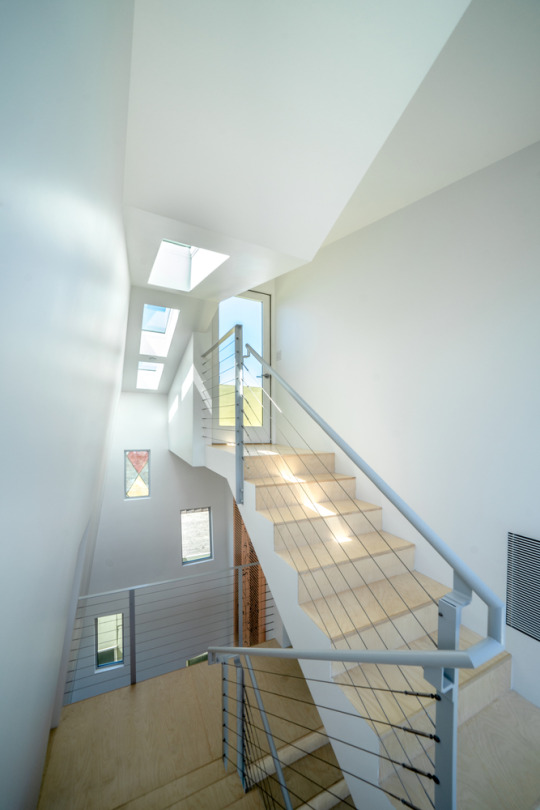


A+M House, Santa Monica Canyon, Los Angeles, USA,
Eric Owen Moss Architect
#art#design#architecture#interiors#santa monica#los angeles#california#eric owen moss#sculpture#vertical#guitar#cnc milling#rhino 3d
141 notes
·
View notes
Text
How do you process carbon fiber brake discs?#carbonfiber #brakedisc #cncmachine #cncmachining #cnc #machine #cncmachinist #cncmillingmachine #cncrouter #cncporn #cncmill #cncmilling #cncplasma #cnclathe #cnccutting #cnclaser #cnctools #machinist #tools #cncprogramming #mold #components #machinetools #jinsucnc #5axis #cncoperator #factory #machining #fyp
#cnc milling#cncmachine#cncmachine tools#cncmachining#cncmill#cncrouter#cnctool#machine#cnc lathe#tool
4 notes
·
View notes
Text
Unveiling the Power of CNC Machines: Milling, Lathes, Plasma Cutting, and Beyond
Introduction
The world of manufacturing has been revolutionized by the advent of Computer Numerical Control (CNC) machines. These machines are essentially computer-controlled robots that can manipulate tools with incredible precision to fabricate a vast array of objects. This comprehensive guide dives deep into the fascinating realm of CNC machines, exploring different types like CNC milling…
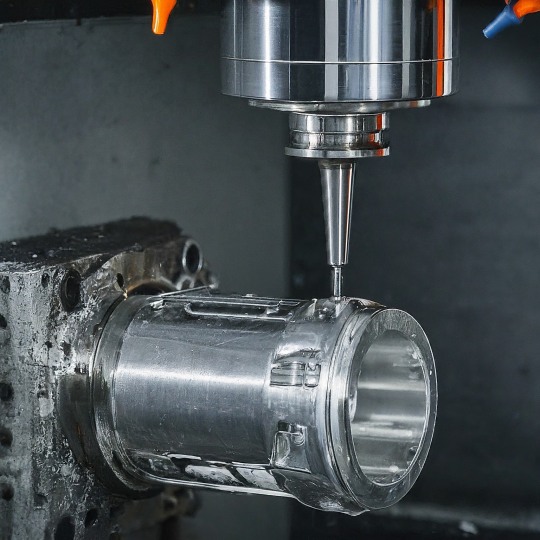
View On WordPress
#3D printing#Additive Manufacturing#CNC Lathe#CNC Milling#CNC Plasma Cutting#Subtractive Manufacturing#Types of CNC Machines
0 notes
Text
The Role of CNC Machining in Customized Manufacturing of Medical Device Part
Introduction:
In the dynamic landscape of medical device manufacturing, precision and customization are paramount. As technology continues to evolve, CNC machining has emerged as a cornerstone in the production of customized medical device parts. In this article, we will delve into the pivotal role of CNC machining, particularly CNC manufacturing and CNC milling, in shaping the future of personalized medical devices.
CNC Manufacturing Unveiled:
CNC, or Computer Numerical Control, manufacturing involves the use of computerized systems to control and automate machining tools. This technology has revolutionized the manufacturing process by enhancing precision, efficiency, and the ability to produce intricate components. In the realm of medical devices, where precision is non-negotiable, CNC manufacturing shines as a versatile and reliable solution.
Precision at Its Core:
CNC manufacturing's prowess lies in its ability to execute highly complex and precise operations. The machinery, guided by computer-aided design (CAD) models, ensures unparalleled accuracy in shaping medical device components. This level of precision is crucial for the production of implants, prosthetics, and other intricate medical devices where even the slightest deviation can have significant consequences.
CNC Milling: Sculpting the Future of Medical Device Parts:
Within CNC manufacturing, CNC milling plays a pivotal role in the production of medical device parts. This subtractive manufacturing process involves removing material from a workpiece to achieve the desired shape. The precision and versatility of CNC milling make it an ideal choice for crafting intricate components, ranging from bone implants to specialized surgical tools.
Customization Beyond Limits:
One of the standout features of CNC machining, particularly CNC milling, is its ability to accommodate customization on a granular level. Medical devices often require tailored solutions to meet the unique needs of patients. CNC milling allows manufacturers to create intricate and personalized parts, ensuring a perfect fit and function for each individual case. This level of customization is a game-changer in the medical industry, where one size certainly does not fit all.
Efficiency and Time Savings:
CNC manufacturing, including CNC milling, significantly reduces production time compared to traditional manufacturing methods. The automated and precise nature of CNC machining minimizes errors, streamlines the production process, and accelerates time-to-market for critical medical devices. In an industry where timely delivery can be a matter of life and death, this efficiency is invaluable.
Quality Assurance and Compliance:
Medical device manufacturing demands adherence to stringent quality standards and regulatory requirements. CNC machining, with its automated processes and strict adherence to design specifications, ensures consistent quality and compliance with industry standards. This reliability is essential for meeting regulatory approvals and instilling confidence in healthcare practitioners and patients alike.
Conclusion:
In the realm of customized manufacturing for medical device parts, CNC machining stands as a technological beacon. The combination of CNC manufacturing and CNC milling not only guarantees precision and efficiency but also opens the door to a new era of personalized medical solutions. As technology continues to advance, the role of CNC machining in shaping the future of medical device manufacturing is poised to become even more significant, bringing us closer to a world where tailored medical solutions are the norm rather than the exception.
Experience this precision and customization with RPWORLD's cutting-edge CNC machining. Elevate your medical device production by contacting us today for unparalleled quality and innovation. Your vision, our precision, shaping the future of medical excellence.
0 notes
Text
0 notes
Text
3D Printing Materials: ABS vs. PLA
When it comes to 3D printing polymers, deciding which material to use can be challenging, especially for beginners or hobbyists in the realm of 3D printing. This article will compare two popular and widely used filaments, PLA and ABS. By examining the similarities and differences in performance between PLA and ABS, this guide aims to provide a better understanding of how to choose the most suitable material for your 3D printing projects.
What are ABS and PLA Filaments?
ABS, an abbreviation for Acrylonitrile Butadiene Styrene, is a thermoplastic composed of acrylonitrile, butadiene, and styrene monomers. This combination results in a robust material known for its strength, toughness, and impact resistance, with glossy-finished prints commonly used in industrial prototypes and durable functional parts.
PLA, an abbreviation for Polylactic Acid, is a biodegradable thermoplastic derived from renewable resources such as cornstarch or sugarcane. Its composition aligns with environmental considerations, offering an eco-friendly option. PLA's ease of use and lower printing temperature make it suitable for beginners and hobbyists, and its matte-finished prints find applications in prototyping, educational projects, and scenarios prioritizing biodegradability.
PLA is often known as a more environmentally friendly material due to its biodegradability. However, it's crucial to note that biodegradation only occurs under specific conditions, and many cities lack the appropriate facilities to facilitate the material breakdown. Someone may be unaware of the limited biodegradability of PLA. As a result, they may feel more confident that PLA will be appropriately handled without generating more waste. On the other hand, ABS is considered a non-environmentally friendly material. Like most plastics, it is produced from petroleum, which means its processing is non-sustainable. However, a notable advantage is that ABS is recyclable.

How Accurate are ABS and PLA Parts?
In most cases, the complexity of the model and the specific calibration of the printer determine the accuracy of 3D-printed parts. Additionally, both PLA and ABS filaments can manufacture parts with very high size accuracy. In fact, for interlocking components printed with PLA or ABS, tolerances of 0.5 millimeters and minimum wall thicknesses of 1-2 millimeters are entirely feasible while still ensuring sufficient strength for the components. It's also worth noting that due to the lower printing temperature of PLA, it is less prone to deformation after cooling compared to ABS. Therefore, in terms of producing complex features and sharp angles, PLA outperforms ABS.
How Strong are ABS and PLA parts?
If you are seeking a material with greater toughness and superior mechanical performance, we recommend using ABS. In addition to being heat-resistant and having higher thermal deformation, it is more impact-resistant, durable, and lighter than PLA. ABS is generally more suitable for a broader range of industrial applications. This is primarily due to its enhanced ductility, ability to resist fracturing, and higher flexural strength and elongation at break.
How Heat-resistant are ABS and PLA parts?
For applications requiring higher temperatures, ABS is preferable over PLA. ABS has a certain heat resistance and a higher glass transition temperature, while PLA melts at much lower temperatures. In the case of PLA, it has a glass transition temperate of 60°C, whereas ABS is 105°C. This determines the parameters set in the slicer software and the time required for heating the 3D printer to reach the desired temperature. Simultaneously, variables of the manufacturing process must be set correctly, including the print bed and the print head. ABS requires a higher print bed temperature, around 110°C, while PLA is typically set at 60°C. In terms of extruders, PLA also requires lower temperatures, particularly around 190-230°C, while ABS needs 220-250°C.
What are Post-Processing for ABS and PLA parts?
Most post-processing techniques are applicable to both of these thermoplastic plastics. However, there are some differences, such as the smoothness, where PLA components often have a shinier surface, while ABS components tend to have a more matte finish. ABS is generally easier to post-process than PLA. For example, while both can be sanded, the process is easier for ABS due to its durability. PLA is more challenging to sand because of its lower heat resistance.
Summary
This article has introduced what is ABS and PLA and explained the similarities and differences in performance between them. For in-depth knowledge and further insights into 3D printing materials, feel free to get in touch with SogaWorks.
SogaWorks offers an extensive range of manufacturing capabilities, including 3D printing services and other exceptional manufacturing services to address your prototyping and production needs. Check out our official website and get an instant, hassle-free quote.
0 notes
Text
In-house special processing including powder coating, welding, EDM wire cut
In-house tool design and development
Reverse engineering
Expertise with exotic material
#CNC Turning#CNC Milling#CNC Welding#Electronics manufacturing services India#electronics manufacturing services chennai#top Ems companies in India#bestEmscompanies in India#EMS#Avalon Sienna EMS
1 note
·
View note
Text
#machinist #cncmachine #cncmachinist #welder #metalwork #sillyhusband
2 notes
·
View notes
Text

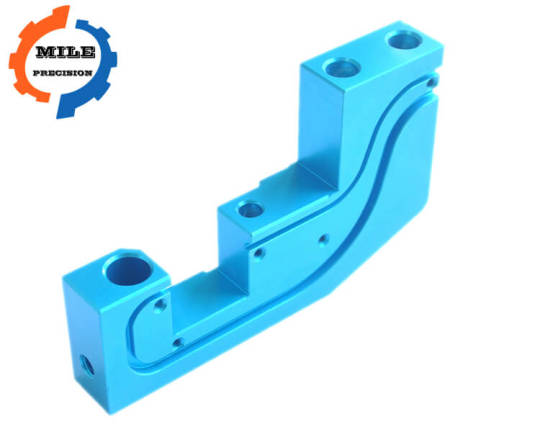

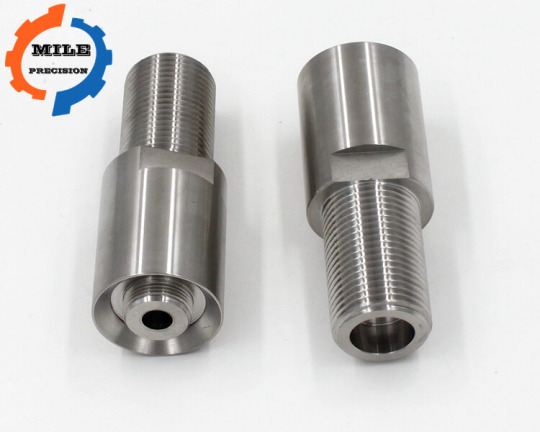

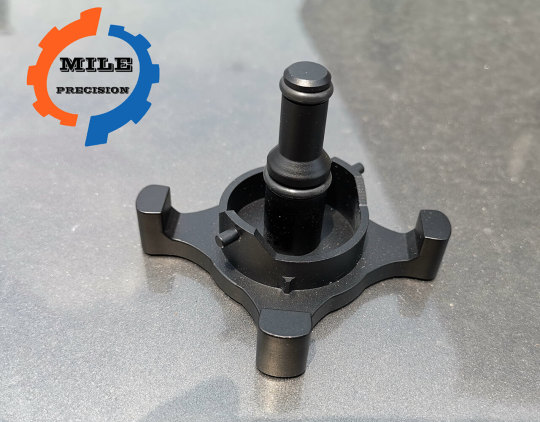
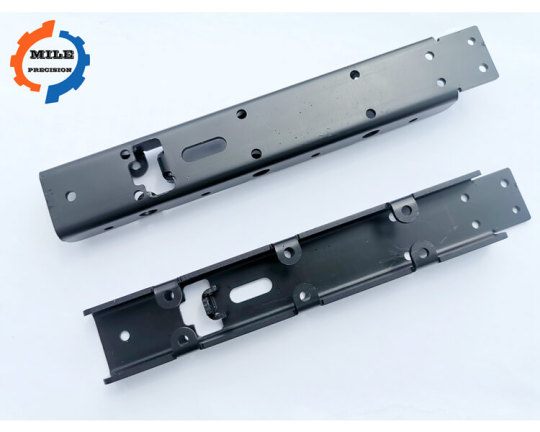
We are an experienced Custom precision machining services supplier, manufacturer in China
Our main industrial part products include turned parts, CNC machined parts, metal stamping parts and CNC milling.
Products include: hydraulic parts, pneumatic components, auto parts, medical equipment, photographic equipment, injection molding machine parts, etc.
OEM parts manufacturers,
Welcome to our website www.milemetal.com
Contact Us [email protected]
NINGBO MILE PRECISION MACHINERY CO.,LTD
#cnc milling#cnc machining#cnc turning#metal parts#oem parts#oem#stainless steel#stamping#casting#forging#auto parts
0 notes
Text
Copper mold sample test made by CNC milling machine. #copper #cncmachine #cncmachining #cnc #machine #cncmachinist #cncmillingmachine #cncrouter #cncporn #cncmill #cncmilling #cncplasma #cnclathe #cnccutting #cnctools #machinist #tools #cncprogramming #mold #components #machinetools #jinsucnc #5axis #cncoperator #factory #machining #aluminum #instagram #fyp
#cnc milling#cncmachine#cncmachine tools#cncmachining#cncmill#cncrouter#cnctool#machine#cnc lathe#tool
4 notes
·
View notes
Text
The wonderful adventure of the Ruitai CNC milling machine
Once upon a time, in the bustling world of machining, there lived a great hero, his name was Ruitai CNC milling machine. With its precision and agility, this powerful machine is known across the country for its ability to shape metal into intricate, stunning creations.
In the kingdom of manufacturing, Ruitai CNC milling machines dominate. It possesses the ability to transform raw materials into beautiful parts, with every cut and contour carved with pinpoint accuracy. It spins firmly as its spindle moves deftly over the workpiece, bringing to life designs etched in digital blueprints.
From the grandest sculptures to the tiniest components, Ruitai CNC milling machines fearlessly meet every challenge. It can handle a variety of materials such as steel, aluminum, and even special alloys. With its versatile tooling options, it can skillfully shape, drill, and carve parts to create parts that are both functional and beautiful.
The Ruitai CNC mill takes it to distant lands, where it serves the noble Tob Company. Together they manufacture complex components for industries including aerospace, automotive, and medical. This dynamic duo brings ideas to life, pushing the boundaries of what is thought possible.
But the journey of Ruitai CNC milling machines does not end there. It's not just limited to milling as it has a secret power called CNC turning. With a simple change of tools, it can transform itself into a master of cylindrical and threaded wonders.
Stay tuned for the next chapter of the Ruitai CNC Mill, which will take you on an exciting journey into the world of CNC turning!
0 notes
Text
How CNC Machining Accelerates Your Lab Equipment Development?

In today's rapidly advancing scientific landscape, the development of cutting-edge laboratory equipment is essential to drive research and innovation. One technology that has significantly contributed to this field is CNC (Computer Numerical Control) machining. This article explores how CNC machining accelerates the development of lab equipment, revolutionizing the way scientists conduct experiments and gather data.
Introduction
Laboratory equipment serves as the backbone of scientific research. From microscopes to spectrometers, precise and reliable instruments are crucial for obtaining accurate results. In recent years, CNC machining has emerged as a game-changer in the production of lab equipment.
The Role of Lab Equipment in Scientific Research
Before diving into the impact of CNC machining, it's important to understand the significance of lab equipment. Researchers depend on these tools to conduct experiments, analyze samples, and make groundbreaking discoveries.
Traditional Manufacturing vs. CNC Machining
Traditionally, lab equipment was fabricated using manual methods or conventional machining processes. CNC machining, on the other hand, offers a more advanced and efficient approach.
Precision and Accuracy
CNC machines excel in producing precise and accurate components. In the world of scientific research, even the slightest deviation can lead to erroneous results. CNC machining ensures that lab equipment meets the highest standards of precision.
Complex Designs Made Simple
The flexibility of CNC machining allows for the creation of intricate and complex designs. Lab equipment often requires components with intricate geometries, and CNC machines can craft these with ease.
Rapid Prototyping
The iterative nature of scientific research demands rapid prototyping. CNC machining enables researchers to quickly develop and test prototypes, speeding up the equipment development cycle.
Cost Efficiency
While precision and complexity are crucial, cost-effectiveness also plays a significant role. CNC machining strikes a balance between high quality and cost efficiency, making it an ideal choice for labs with budget constraints.
Materials and Compatibility
CNC machines can work with a wide range of materials, including metals, plastics, and ceramics. This versatility ensures that lab equipment is compatible with the specific needs of various experiments.
Customization for Research Needs
Every research project is unique, and lab equipment often needs to be customized to meet specific requirements. CNC machining allows for tailor-made solutions, ensuring that researchers have the tools they need.
Automation and Productivity
Automation is a key feature of CNC machining. This reduces the need for manual labor, increases productivity, and minimizes the risk of errors in the manufacturing process.
Reducing Lead Times
Time is of the essence in scientific research. CNC machining significantly reduces lead times compared to traditional manufacturing methods, allowing researchers to access equipment more quickly.
Quality Control
Quality control is paramount in lab equipment manufacturing. CNC machining offers consistent quality, reducing the likelihood of defects or inconsistencies.
Environmental Sustainability
CNC machining is also environmentally friendly. It generates less waste, consumes fewer resources, and produces fewer emissions compared to some traditional manufacturing processes.
Conclusion
In conclusion, CNC machining has revolutionized the field of lab equipment development. Its precision, flexibility, cost efficiency, and sustainability make it an indispensable tool for researchers worldwide. By embracing CNC machining, labs can accelerate their equipment development processes and pave the way for groundbreaking scientific discoveries.
If you are looking for any of the above service please visit us on RPWORLD.
0 notes
Text
https://necktech.net/
0 notes